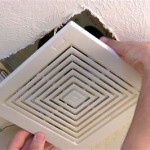Faucet Loose on Bathroom Sink: Essential Fixes and Prevention
A loose faucet on a bathroom sink can be a nuisance, causing water leaks, rattling noises, and potential damage to the sink or surrounding area. Understanding the causes of a loose faucet and knowing how to fix it can help prevent further issues and maintain a well-functioning bathroom.
Causes of a Loose Faucet
There are several reasons why a faucet may become loose on a bathroom sink:
- Worn-out washers: Washers are small rubber or plastic discs that create a seal between the faucet handle and body, preventing water leaks. Over time, washers can wear out or become damaged, leading to a loose handle.
- Loose mounting nuts: The mounting nuts are responsible for securing the faucet to the sink. If these nuts become loose, they can allow the faucet to wiggle or become detached from the sink.
- Damaged O-rings: O-rings are rubber gaskets that provide a seal between the faucet body and the sink. If an O-ring becomes damaged or worn, it can cause the faucet to wobble or leak.
Fixing a Loose Faucet
Fixing a loose faucet on a bathroom sink is a relatively simple task that can be completed with basic tools and supplies:
- Turn off the water supply: Before starting any repairs, it's crucial to turn off the water supply to the faucet by locating the shut-off valves under the sink.
- Remove the handle: Most faucet handles are secured with screws or caps. Use a screwdriver or wrench to remove them and set the handle aside.
- Tighten the mounting nuts: Locate the mounting nuts that secure the faucet to the sink. Using a wrench, carefully tighten these nuts until the faucet is secure.
- Replace the washers or O-rings: If the washers or O-rings are worn or damaged, they should be replaced. Remove the old ones and replace them with new ones of the same size and type.
- Reassemble the faucet: Once the mounting nuts are tightened and any necessary parts are replaced, reassemble the faucet by replacing the handle and turning the water supply back on.
Preventing a Loose Faucet
To prevent a faucet from becoming loose in the future, consider the following tips:
- Regular maintenance: Regularly check the faucet for any signs of looseness, leaks, or damage. Address any minor issues promptly to prevent them from becoming major problems.
- Proper installation: Ensure the faucet is properly installed by a qualified plumber. If the faucet is not installed correctly, it may become loose over time.
- Avoid overtightening: When tightening the mounting nuts, avoid overtightening them. This can damage the nuts or the faucet itself.
Conclusion
A loose faucet on a bathroom sink can be an annoyance, but it's a problem that can be easily fixed with the right tools and knowledge. By understanding the causes of a loose faucet, following the suggested steps to fix it, and implementing preventive measures, you can maintain a securely attached and well-functioning faucet for years to come.

How To Fix Loose Sink Faucet

How To Tighten Faucet Handle Homeserve Usa

How To Tighten A Loose Bathroom Faucet

Bathroom Faucet Handles Loose Wobbly Diy Fix

How To Tighten A Loose Bathroom Faucet

Loose Faucet Lever And No Set Plumbing Inspections Internachi Forum

How To Tighten A Loose Delta Bathroom Sink Faucet Spout Handles 5 22 18

Loose Faucet Lever And No Set Plumbing Inspections Internachi Forum

Sbw 8 A Loose Bathroom Faucet Handle

How To Tighten A Sink Faucet Properly The District Weekly
Related Posts







